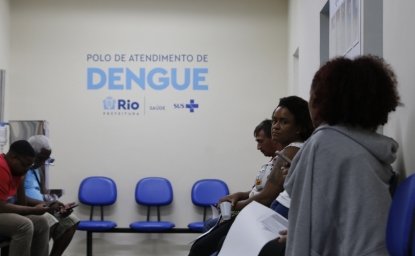
A blog of the Latin America Program
Lies, damn lies: INDEC reborn
In 2007, Argentina became a statistical outlier. That year, President Néstor Kirchner intervened in the country’s national statistics institute, INDEC, and the government began manipulating basic data for political purposes. As a result, parallel indices of inflation, poverty, economic growth, crime and other subjects emerged, both inside and outside Argentina, causing confusion about the actual state of the economy and society. The data manipulation led to incredulous claims. In one notorious example, Mr. Kirchner’s successor, former first lady Cristina Fernández de Kirchner, attended the 2015 meeting of the UN Food and Agriculture Organization in Rome and claimed that Argentina had a poverty rate lower than Germany. (She cited the official poverty rate of 4.7 percent in 2013, whereas private analysts at the time estimated that as many as one-in-three Argentines lived in poverty.)
The dispute was not only of interest to academics. Investors struggled to evaluate opportunities in Argentina without reliable information. Advocacy groups lacked the tools to scrutinize public policies. In 2013, the International Monetary Fund formally censured Argentina for failing to provide credible data, the first time it had ever taken that step against a member. Its decision validated previous criticisms from within Argentina, and made it more difficult for the government to dismiss critics as biased political opponents. In his presidential campaign, Mauricio Macri pledged that his “priority is to make transparent our statistics,” and promised that INDEC would “recover the credibility it once had.” Shortly after taking office, he declared a national “statistical emergency,” and sought to rehabilitate INDEC.
These days, the statistics in Argentina are not pretty, showing high inflation, negative growth and persistently high poverty. But by all accounts, the numbers are now accurate, and internationally accepted.
The Inter-American Development Bank has highlighted that transformation in a new report, “Who wants to know? The political economy of statistical capacity in Latin America.” The Argentina case, the report notes, is “sui generis”; the country’s “stable and solid” data system saw a “rapid weakening of statistical capacity over the last decade, a product of the intervention by the executive branch.” Since its founding in 1968, INDEC had been among the best statistics agencies in the region. But as government intervention intensified, pro-government ideologues replaced career statisticians and introduced so-called “militant statistics” – data “produced in line with a political purpose.”
Nowadays, given INDEC’s consistently grim economic news, it might seem like the government would regret its commitment to data quality and transparency. But to foreign investors, INDEC’s rebirth has been an essential ingredient of the improved investment climate. The same is true for the IMF. Only two years after lifting its censure against Argentina, the fund agreed to loan the government $50 billion, the largest loan in IMF history.
Sweetening the deal: Argentina ships dulce de leche to Japan

The latest economic data in Argentina has left a bitter taste, with growth dropping faster than you can say, “¡Qué quilombo!” But the country received sweet news the other day, as it celebrated its first-ever shipment of dulce de leche to Japan, The Bubble reports.
Argentina’s dulce de leche producers see “great potential” in Japan, the world’s third-biggest economy, and the addition of a new market comes at an important moment for this segment of the dairy industry. The confection remains comically popular in Argentina, filling facturas and dessert pastries, and populating an entire section of the Freddo ice cream menu. The average Argentine reportedly consumes almost seven pounds of the caramel-like spread annually, and one 79-year-old company, San Ignacio, produces 10,000 tons of dulce de leche every year in its Santa Fé plant. But dulce de leche exports have decreased for seven years straight. In 2010, Argentina’s dulce de leche exports fetched $12.6 million, according to INDEC. Last year, sales totaled just $7.9 million.
It is not clear how dulce de leche will fit into Japanese cuisine. Desserts in Japan are typically more subtle, often relying upon red bean paste, as in taiyaki, or pounded sticky rice, as in mochi. But the focus on Japan is part of Argentina’s broader push for space on Asian menus and store shelves. In recent months, for example, Argentina has gained market access for beef sales in both China and Japan. Dulce de leche is not a natural pairing for wagyu, but if Japanese chefs visit Buenos Aires, they’ll discover that it goes with just about any other dish.

Latin America Program
The Wilson Center’s prestigious Latin America Program provides non-partisan expertise to a broad community of decision makers in the United States and Latin America on critical policy issues facing the Hemisphere. The Program provides insightful and actionable research for policymakers, private sector leaders, journalists, and public intellectuals in the United States and Latin America. To bridge the gap between scholarship and policy action, it fosters new inquiry, sponsors high-level public and private meetings among multiple stakeholders, and explores policy options to improve outcomes for citizens throughout the Americas. Drawing on the Wilson Center’s strength as the nation’s key non-partisan policy forum, the Program serves as a trusted source of analysis and a vital point of contact between the worlds of scholarship and action. Read more


Argentina Project
The Argentina Project is the premier institution for policy-relevant research on politics and economics in Argentina. Read more

Explore More in Weekly Asado
Browse Weekly Asado
Dengue Haunts South America’s Summers

Lessons from Costa Rica’s Economic Transformation

Women and Latin America’s Digital Revolution

